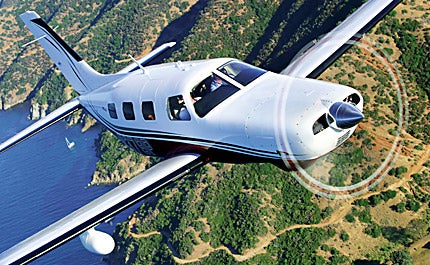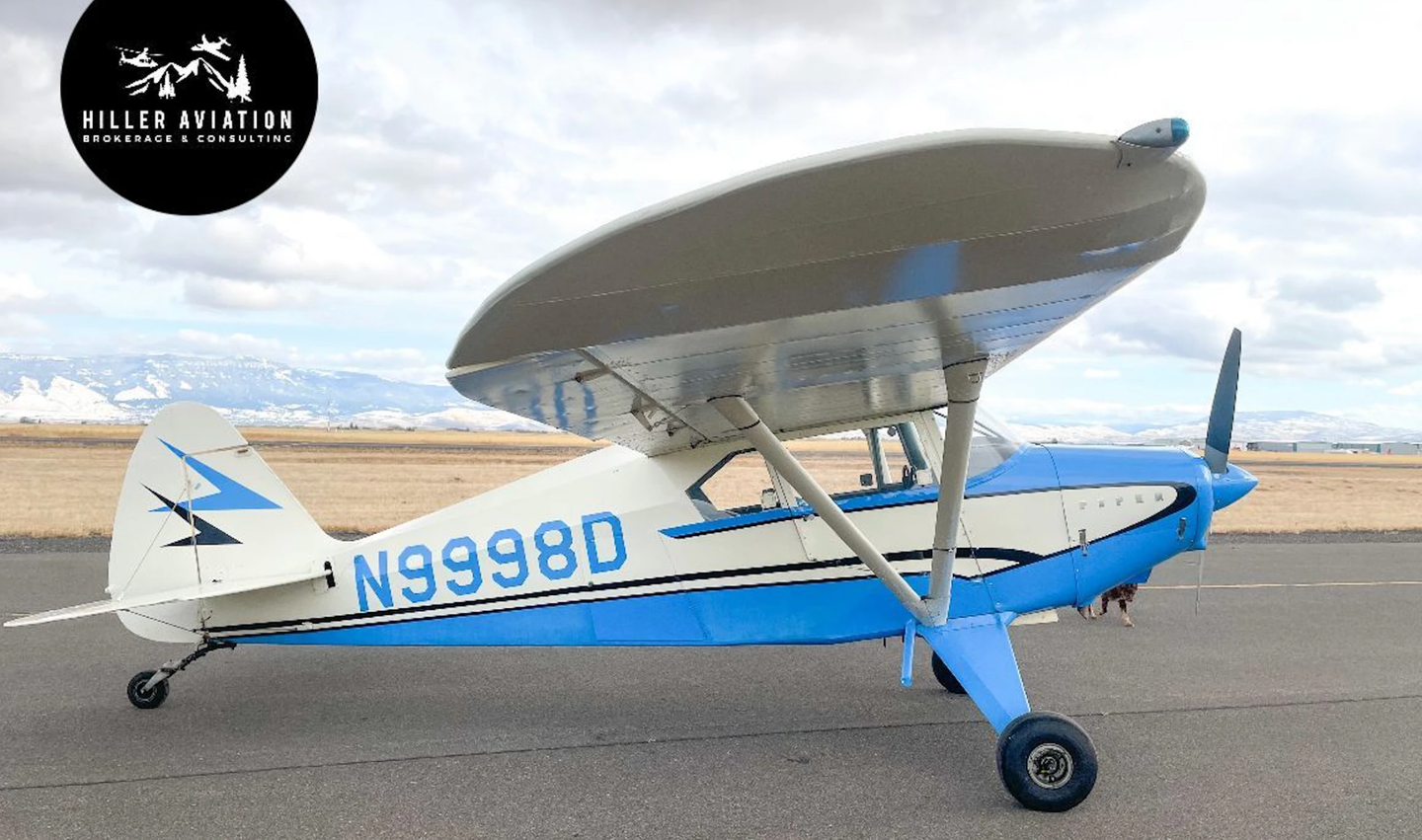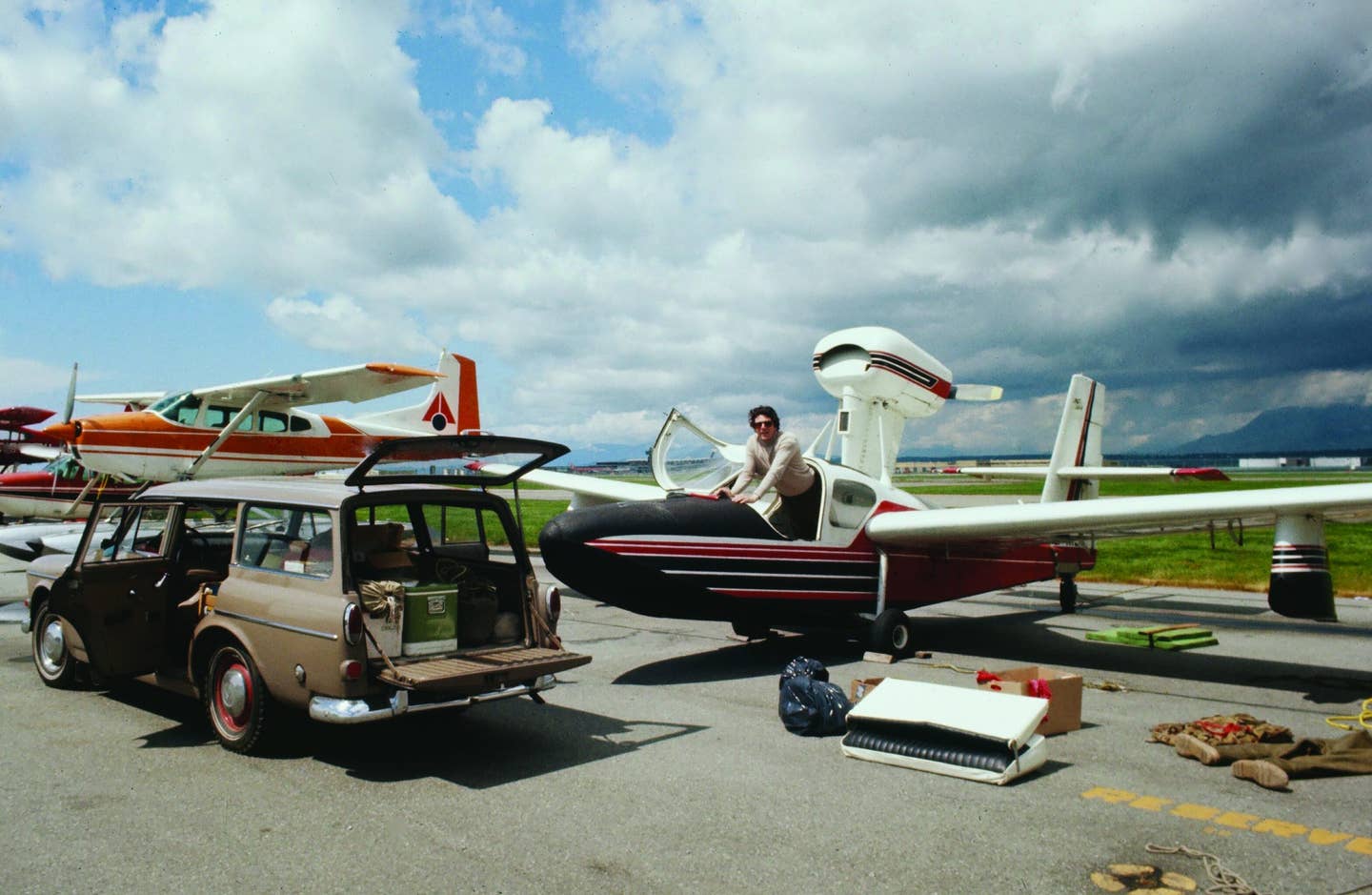Piper Mirage: Pistons, Pressure and Class
The most comfortable piston single in the sky
 Just as the Mooney 201 rescued its namesake company from oblivion in 1976, in the mid '80s, the Malibu offered Piper Aircraft the only light at the end of the tunnel that wasn't a train. After the whirlwind uphill ride of the '70s, general aviation sales were tumbling all across the board, but the Malibu was an instant success.
Just as the Mooney 201 rescued its namesake company from oblivion in 1976, in the mid '80s, the Malibu offered Piper Aircraft the only light at the end of the tunnel that wasn't a train. After the whirlwind uphill ride of the '70s, general aviation sales were tumbling all across the board, but the Malibu was an instant success.
Despite an initial sales price of $350,000 in 1984, Piper sold some 500 units in the Malibu's first six years of production. That's approximately $180 million worth. There was even a time (1989) when the revised Malibu Mirage had the unlikely dual distinctions of being the most popular and most expensive single-engine airplane in the world.
Today's Mirage retains all of the talent that made those early Malibu/Mirage PA46s so popular, but now with the addition of a to-die-for avionics suite. The Avidyne FlightMax Entegra, one of the magic systems currently on the market, comes standard on all new Mirages.
Piper recently brought a new Mirage to town, and I spent a day with the PA46 and with Piper's chief pilot, Bart Jones. For me, the Mirage's overriding attraction has always been that it's probably the most comfortable piston single in the sky. Perhaps I'm just getting old, but pure, blazing speed seems somehow less attractive if you're not at least moderately comfortable.
By any measure, the airplane's cabin is spacious and well-appointed, more appropriate to a twin than a single. Perhaps more than coincidentally, the cabin is almost exactly the same width and height as the old Piper Navajo cabin-class twin. The front office measures nearly 50 inches across and 45 inches tall, and leg room in back is generous enough that opposing aft passengers don't need to overlap legs.
I've spent my share of time flying Malibus of various descriptions to and from Europe, Africa, Australia and Japan, and the airplanes make eminently comfortable long-distance travelers. It's a plane in which you can easily spend a few hours or a few days without complaint. (The longest of those international hops was an 11,500 nm trip across both the Pacific and Atlantic from Sendai, Japan, to Düsseldorf, Germany, with the owner in the right seat part of the way. Though the trip took almost 70 flight hours, it was one of the easiest ferry flights I've ever made.)
Today's Mirage may be identical in basic configuration to the original 1989 model, but changes to the panel have been exponential. The Avidyne Entegra system comes standard on all Mirages, and it incorporates all navigation and communication functions into a trio of 10.4-inch, flat-screen displays, twin PFDs and a center-mounted MFD. If there's a downside to the Mirage's avionic sophistication, it may be that it now takes longer to figure out the avionics than it does to check out in the airplane itself.
In fairness, the Entegra system isn't that complex once you adjust to the high level of integration. It does, however, represent a new way of evaluating the flying numbers by emphasizing digital readouts via rolling tapes rather than the more conventional analog gauges. For those aviators who have trouble making the adjustment, Piper has retained a trio of two-inch analog backups: airspeed, altitude and artificial horizon.
Piper mounts most electrical switches on the overhead, including the push button starter. In turbine-twin style, you don't need a key for start. If you do it right, the big 350 hp Lycoming spools up gradually rather than in a rush, again more reminiscent of a turbine than a piston.
Not surprisingly, that's also the way the airplane responds to takeoff power. At 4,340 pounds gross weight, the Mirage is by far the world's heaviest production piston single. The feel is more reminiscent of a light twin than a single. At the Mirage's heavy max gross weight, even the big 350 hp Lycoming can't reduce power loading below 12.4 pounds/horsepower.
Push the throttle full forward for departure at max gross, and the Mirage takes a while to gather itself for the task. Once you're off and flying with the wheels in the wells, the Mirage ascends at 1,000 fpm or better, and climb holds up well as you leave the earth below. I've operated Mirages at weights as high as 1,000 pounds over gross on ocean crossings, and even when they're heavily overloaded, climb eventually settles at a reasonable number.
Piper lists max cruise at 213 knots at optimum altitude, but it's unlikely that most Mirage owners run the airplane that hard. Piper's Bart Jones and I lofted above the Los Angeles Basin to 17,500 feet on a reasonably standard day and saw just under 200 knots at max cruise power. With 120 gallons aboard and a burn of about 20 gph, you could plan on an easy 4.5 hours plus reserve, worth 900 nm between pit stops.
As usual, you can't fly with both full tanks and full seats. Piper lists 3,121 pounds as a typical Mirage's standard empty weight, so full tanks leave you with 500 pounds of payload for people and things. If you need to carry four folks, plan to leave behind about 30 gallons of fuel; if you plan to carry five, 60 gallons.
The Mirage is certified to FL250, but again, many owners prefer to operate at more modest altitudes, typically FL210 or 220. At this height, the Mirage will lift you well above most of the world's weather, and you'll generally cruise in smooth air and sunshine with the 5.5 psi pressurization system providing a cabin under 6,000 feet. Should you elect to stop the climb at 17,500 feet, below positive control airspace, the Mirage can maintain a nearly sea-level cabin. In other words, your body may never know you've left the ground. As one who's probably killed millions of brain cells by operating unpressurized airplanes at 8,500 feet and up for 35 years, I can personally attest that pressure is better.
With a wing loading of almost 25 pounds per square foot, the Mirage plows through turbulence with more aplomb than a Bonanza or Mooney. All three models have about the same wing area, but the Mirage's short chord and long span (43 feet) generate a high-aspect ratio for good high-altitude cruise and a slightly better 12-to-one glide ratio. If you're level at FL220 with terrain that's near sea level below, you can glide close to 50 miles. Just be sure to pick the right direction.
Handling is about what you'd expect of a two-ton single. Some pilots feel that the airplane flies better when its heavy rather than light, providing a more solid feel in turns and better control harmony. That's a characteristic shared with the Saratoga HPs, the Seneca V and even the old Aztec.
Another similarity between the Mirage and most twins is that descents are best made power-on. The Mirage employs a pair of Precise Flight SpeedBrakes as standard equipment, and deploying them converts an aerodynamically clean airplane into a dirty one. It's possible to descend at a good rate with the power up and the spoilers extended. Once you're close to the airport, you can throw the wheels and the first 10 degrees of flaps to the wind at 165 knots.
Extend the flaps to their full 36 degrees, and you'll find the Mirage's low-speed handling to be among the best in the industry. Dirty stall is 58 knots, and if you subscribe to the 1.2 Vso rule for minimum approach speed, you could theoretically amble down final to as slow as 70 knots. Piper is a little more conservative and recommends 78 knots for short-field efforts. In smooth air, you could pull off either speed, because the Mirage provides plenty of warning before the stall. A reasonably competent short-field approach should allow you to touch down and grind to a stop in well under 1,000 feet. As always, remember that takeoff distance is the more critical number, and you'll rarely get off in the same distance as landing.
Despite how well-entrenched the Mirage has become as a mainstay of general aviation, the competition is heating up. While it's true that there's currently no other pressurized piston airplane in production (the German Extra 400 isn't produced any longer), Darwin Conrad of JetPROP LLC in Spokane, Wash., has experienced remarkable success with his STC converting basic Mirages and older Malibus to Pratt & Whitney PT-6A turbines (nearly 200 converted so far). Piper's own Meridian offers another turboprop alternative to the Mirage, though at a price of nearly $1.9 million.
The new wave of VLJs may affect the Mirage market. The latest word on the P&W-powered Eclipse 500 is that its list price will be around $1.6 million, and the Diamond D-Jet with a single Williams turbofan will allegedly sell for about $1.4 million sometime in late 2007. Further up the food chain, the Adam A700 will cost about $2.2 million, and the new Cessna Mustang will list at $2.6 million or so. The HondaJet will probably top the class, and the new Cirrus entry may bottom it, though that airplane is still something of an x factor.
At full sticker, the Mirage lists for $1.1 million, cruises at least 100 knots slower than any of the aircraft listed above and flies behind piston power. No matter how well Lycoming has refined the airplane's TIO-540 powerplant, it can't hope to match the reliability of the turboprop competitors or the pure jets in the VLJ class.
That may or may not limit future Mirage sales. The Mirage can be operated down low on about 20 gph---that kind of economy is a benefit the VLJs will never match (though diesels probably will). Turbines must fly high to realize any efficiency. Similarly, the Mirage can handle approaches at 75 to 80 knots if necessary---you'd be ill-advised to try that speed in a VLJ.
The fact is that, at the moment, no one has delivered a VLJ at any price, so for a little while, at least, the Mirage may be the only new pressurized single you can buy for around one million. We'll have to wait and see if the VLJ market turns out to be as robust as so many people hope it will be.
SPECS: 2006 Piper Mirage PA46

Subscribe to Our Newsletter
Get the latest Plane & Pilot Magazine stories delivered directly to your inbox






